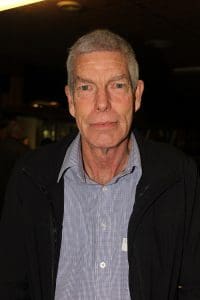
Lincoln University lecturer Chris Logan.
NITRATE run-off regulations imposed on New Zealand dairy farms are proving to be an unlikely ally of the country’s declining sheep industry.
New dairy conversions in New Zealand are probably going to have to use sheep to offset their average nitrate run-off or leaching and meet strict environmental rules, South Australian lamb producers were told last week.
Lincoln University animal science lecturer Chris Logan told producers at the Limestone Coast Lamb Forum he expected the nitrate leaching laws would help stabilise the country’s sheep numbers.
NZ dairy conversions and dairy support activities, along with forestry and urban sprawl, have been listed as the main contributors to the displacement of sheep and beef farming.
Click here to get the latest Sheep Central story links sent to your email inbox.
For the year to June 30 2016, New Zealand’s total sheep numbers were down 3 percent on the previous year, to 28.25 million head. NZ’s breeding ewe flock declined 3.1pc year-on-year, to 18.48 million head – with all regions of the country recording lower numbers. Beef + Lamb NZ has said the reduction in breeding ewes reflected older ewes being culled, transitions towards cattle enterprises, tough seasonal conditions and related management issues.
Mr Logan said farmers wanting to do a new dairy conversion in New Zealand now have to get consent from authorities for a land use change from either sheep or beef farming, and meet strict environmental requirements.
“In the region of Canterbury that I’m most familiar with, the maximum nitrate leach allowed per year is 15kgN/ha/year,” he said.
“Under a dairy situation you are going to be using some irrigation, some nitrogen fertiliser’s going on.
“The modelling we’ve done would suggest that under the best practice management situation you are going to be talking about nitrate leakage of 25kgN/ha/year,” Mr Logan said.
“So to get that down to 15kgN/ha, you have to offset it by having a sheep operation running alongside it under the same enterprise consent, that is doing 8kgN/ha (in nitrate leakage).
“One counterbalances the other and you come back to an average of around that 15kgN/ha mark – any new dairy conversions will probably have to do that,” he said.
“Existing conversions in Canterbury are now having to have consent to carry on farming.
“They have to do a baseline nitrate leakage between 2009 and 2013 and if consent is granted at that baseline, they cannot exceed it from then on and need an environmental plan that shows they are not going to increase that baseline.”
Mr Logan said he was involved in a recent dairy conversion on university land in Canterbury.
“It would not have happened if we didn’t have sheep.”
“Dairy conversions are relying on the sheep industry; they need us more than we need them,” he said.
“So if you were going to convert a 1000 hectare sheep and beef into dairy, you will only be able to do half of it.”
Mr Logan said NZ’s sheep flock had declined from 40 million ten years ago to just 27.6 million, down 31 percent. Beef cattle numbers have declined by a similar but less percentage, but dairy cattle numbers were up 27pc to about 5 million cows. Total stock units in the country are down 10pc due to urban sprawl and viticulture.
“Currently we have under 20 million breeding ewes, less than half of what we were back in the heydays of the 1980s.”
Mr Logan said the rise in size of the dairy industry has started to flatten out, due to the environmental restrictions.

HAVE YOUR SAY